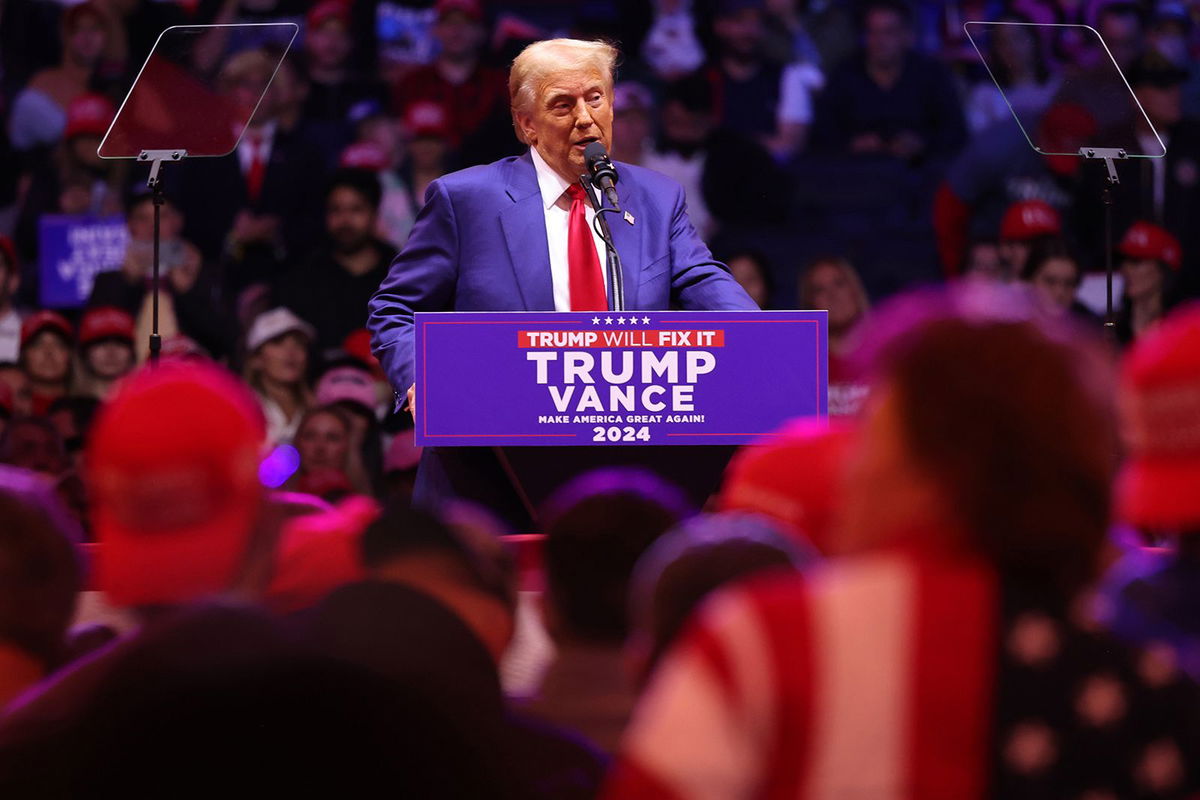How social media video clippers have become some of the most powerful outlets of the 2024 campaign

Former President Donald Trump speaks at a campaign rally at Madison Square Garden on October 27.
By Brian Stelter, CNN
New York (CNN) — Some of the most powerful people in this year’s election cycle are the clippers.
Yes, the video-clippers. They watch campaign events and cable newscasts for hours on end, looking for the standout moments — those worth clipping and sharing with millions of people via social media.
The campaigns for Vice President Kamala Harris and former President Donald Trump both have teams of clippers. So do outside political groups like American Bridge 21st Century, a liberal super PAC. But the most impactful video publishers are frequently people who work from home on their own, shaping the news cycle one snappy clip at a time.
Trump’s rally Sunday at Madison Square Garden featuring extreme and hateful rhetoric was the latest proof point of the video-clipping phenomenon.
Racist and obscene comments from some of the event’s early speakers were clipped and flagged by popular X users like @Acyn and Aaron Rupar. Both accounts, for instance, posted clips of comedian Tony Hinchcliffe likening Puerto Rico to a “floating island of garbage.”
The clips went viral, and Kamala Harris’s campaign capitalized by promoting the vice president’s pledge to help Puerto Ricans. (Coincidentally, earlier in the day, Harris had announced plans for an opportunity economy task force for the island.) Several Puerto Rican superstars posted support for Harris on Sunday night – and some shared the offensive Hinchcliffe clip too.
After the rally, a Trump campaign spokeswoman said “this joke does not reflect the views of President Trump or the campaign.” But the video clips suggested otherwise, since Hinchcliffe was speaking from a lectern bearing the former president’s name when he spoke.
Social media video-clipping was a factor in the 2016 and 2020 elections, too, but as audiences increasingly shift online, the practice has taken on greater prominence this election season. At a Saturday night rally in Michigan, Michelle Obama even referred to it as a campaign tactic; she encouraged rallygoers to “send a video of what I’ve just said” to voters who still need persuading.
There are a handful of media commentators and activists who post day and night and have outsized influence because the moments they catch and clip inspire news stories, TV segments, and fundraising campaigns.
In late July, one week after Trump picked Ohio Sen. JD Vance as his running mate, former Republican stalwart turned anti-Trump crusader Ron Filipkowski posted a clip of Vance on “Tucker Carlson Tonight” in 2021 assailing “childless cat ladies.” That blast from the recent past generated days of news coverage and widespread criticism of Vance.
Most clips aren’t so cataclysmic, but evidence of the “clippers election” can be found all throughout the campaign season.
Unflattering clips of President Joe Biden during the June 27 presidential debate hosted by CNN ricocheted around the web and cemented impressions about the president before the debate even ended.
To this day, snippets of Biden appearing aloof are a staple of the Republican National Committee’s @RNCResearch account on X.
On the left, numerous X accounts exist mostly to promote clips of Trump sounding unhinged.
Video-clippers drive news coverage because the moments they post get circulated among reporters, producers and assignment editors. The clips also get reposted across TikTok, Instagram, YouTube, and other platforms. In effect, the clippers function as an early warning system for newsrooms, surfacing remarks, noise or nonsense that’s about to get a whole lot of attention.
Rupar, who previously wrote for Vox, now produces his own Substack newsletter, Public Notice. He said he has been “live-clipping” Trump rallies since 2017 because of the inherent news value.
“MAGA rallies are ugly affairs, but it’s difficult to capture that in a traditional news writeup,” Rupar told CNN. “By breaking up the rallies into clips and highlighting the most newsworthy moments, people get an unfiltered view of Trumpism without having to suffer through his Castro-like speeches.”
The day before Trump’s Madison Square Garden rally, Rupar posted numerous clips of Harris and former first lady Michelle Obama speaking in Michigan that garnered millions of views, according to X. Then he highlighted Vance’s appearances on Sunday morning public affairs programs and racked up even more views.
Pro-Trump accounts are equally busy. Trump’s recent appearance on Joe Rogan’s podcast, for example, was dissected, clipped and remixed by both cheerleaders and critics of the former president.
Trump’s campaign account on X, dubbed @TrumpWarRoom, pushes out promotional video clips day in and day out. The Harris campaign does the same with @KamalaHQ. As a CNN analyst, my TV appearances have been clipped by both accounts, and it can be a disorienting experience, since social media viewers aren’t getting the full context of the TV segment. But once you’re clipped, there is little you can do about it. The clippers have the power.
The-CNN-Wire
™ & © 2024 Cable News Network, Inc., a Warner Bros. Discovery Company. All rights reserved.